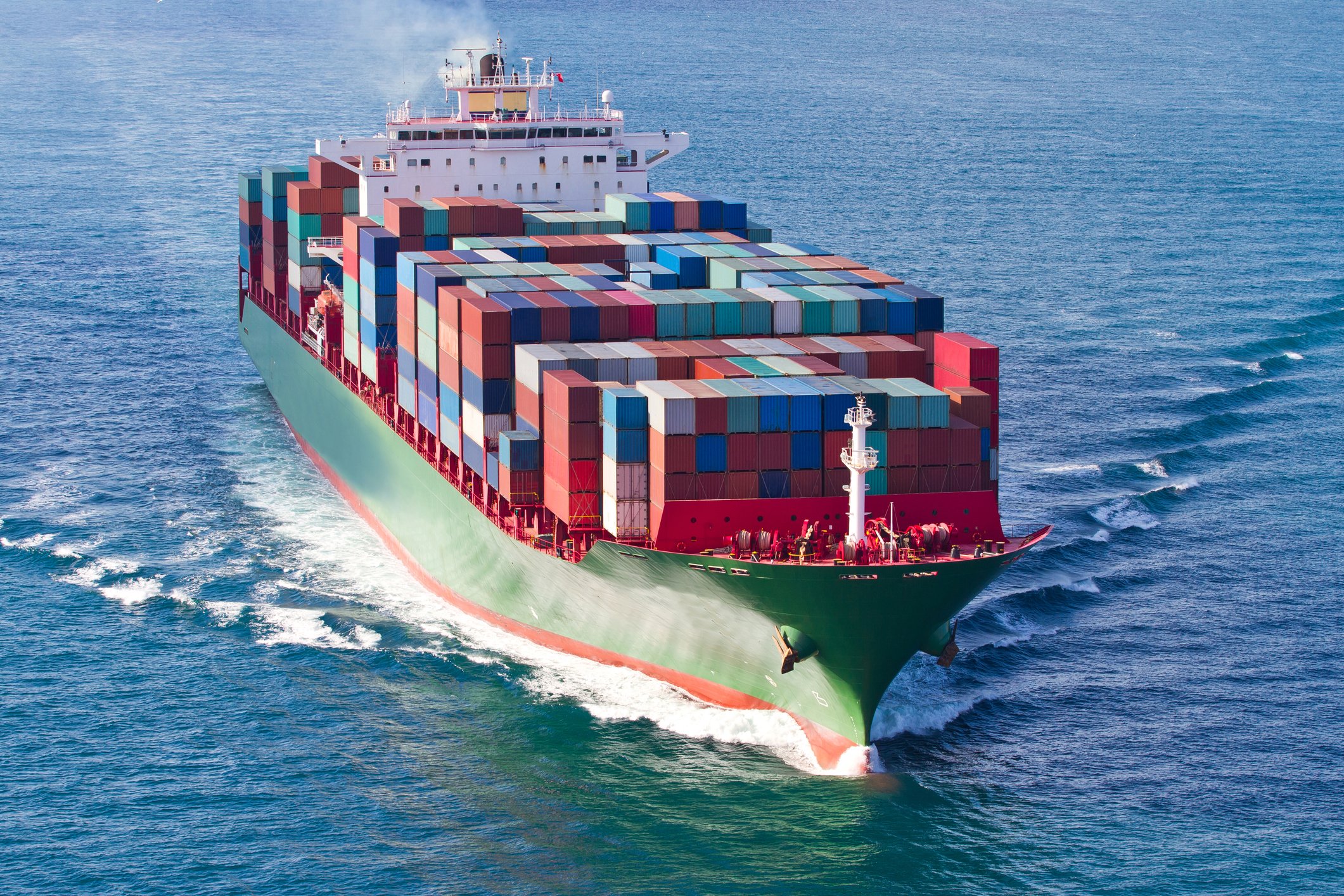Source: Matson.
When most people think about the U.S., they tend to focus on the continental 48 states, thinking about Hawaii and Alaska as tourist destinations more than integral parts of the national economy. Yet given the large distances between the West Coast and Hawaii in particular, shipping goods between Hawaii and the mainland U.S. involves considerable logistical effort. Matson (MATX +0.18%) is the top player in the domestic shipping market with Hawaii, and thanks to legal protections that prevent foreign competition, Matson has a stranglehold on this key market. Coming into Tuesday afternoon's fourth-quarter financial report, Matson investors had high expectations for further growth from the company, and Matson managed to blow its earnings growth out of the water with results that exceeded investors' hopes. Let's look more closely at Matson's numbers and see whether 2015 will be as lucrative for the shipping company.
Matson benefits from trade tailwinds
Matson's headline numbers reflected solid growth. Revenue climbed almost 8% during the quarter to $443.5 million, which fell short of the consensus expectation among investors for about $450 million in sales. Yet Matson made the most of the revenue it did get, as earnings per share more than doubled from year-ago levels to $0.63 per share, beating the consensus projections by a nickel.
Looking more closely at Matson's various segments, the key Ocean Transportation division saw revenue gains of 7.7%, as transportation volumes were somewhat mixed. Container unit volume in trade with the Chinese market climbed 13.5%, and the volume of containers to Hawaii and Guan inched higher. But container volume to the South Pacific and Micronesia fell by almost 15%, and automotive shipping volumes to Hawaii fell the most, down almost 22% from year-ago levels. Meanwhile, Matson's Logistics division saw slightly faster sales growth, as gains from revenue from its highway business offset a slight decline in intermodal sales.
Source: Matson.
CEO Matt Cox was generally pleased with the results. "Performance improved in all of our business lines," Cox said, "buoyed by demand for our expedited China service, modest market growth in Hawaii and Guam, and continued improvements in Logistics operations and [its] SSAT [terminal joint venture]."
Can Matson keep delivering the goods in 2015?
For the most part, Matson is optimistic about prospects for the coming year. The company sees Hawaii as being in a multi-year economic recovery, with expectations for modest trade growth in 2015. Even with ongoing difficulties from port congestion on the West Coast, Matson expects its SSAT terminal joint venture to produce modest profits this year. Strong demand for its service to China should continue, and Guam should provide incremental gains to Matson's results as well.

Matson's intermodal business. Source: Matson.
Of even greater value, though, could be Matson's entry into the Alaska market, thanks to its pending buyout of the Alaska segment of Horizon Lines. Just as Matson's trade between the mainland and Hawaii is protected by the Jones Act, Matson will enjoy a similar lack of competition in running shipping operations with Alaska. Moreover, given the different drivers of the Alaskan economy compared to Hawaii, Matson will get greater economic diversification from having two separate markets to serve. When you add in the potential utilization boosts and overall efficiency gains, Matson's operations in 2015 could look a lot different than they have in the past.
It's important to note, though, that Matson's 2015 outlook doesn't include any provisions for the Horizon acquisition. That helps investors assess the transaction separately from Matson's own continuing operations, but it also raises some uncertainty about the exact impact that the acquisition will have on Matson's results in 2015.
Matson investors didn't react strongly to the report, with shares unchanged in the first hour after the company's announcement in after-hours trading. Nevertheless, with signs of strength in the overall economy, prospects for trade between the U.S. mainland and Alaska and Hawaii look good -- and Matson will be in an even better position to take full advantage of them.







